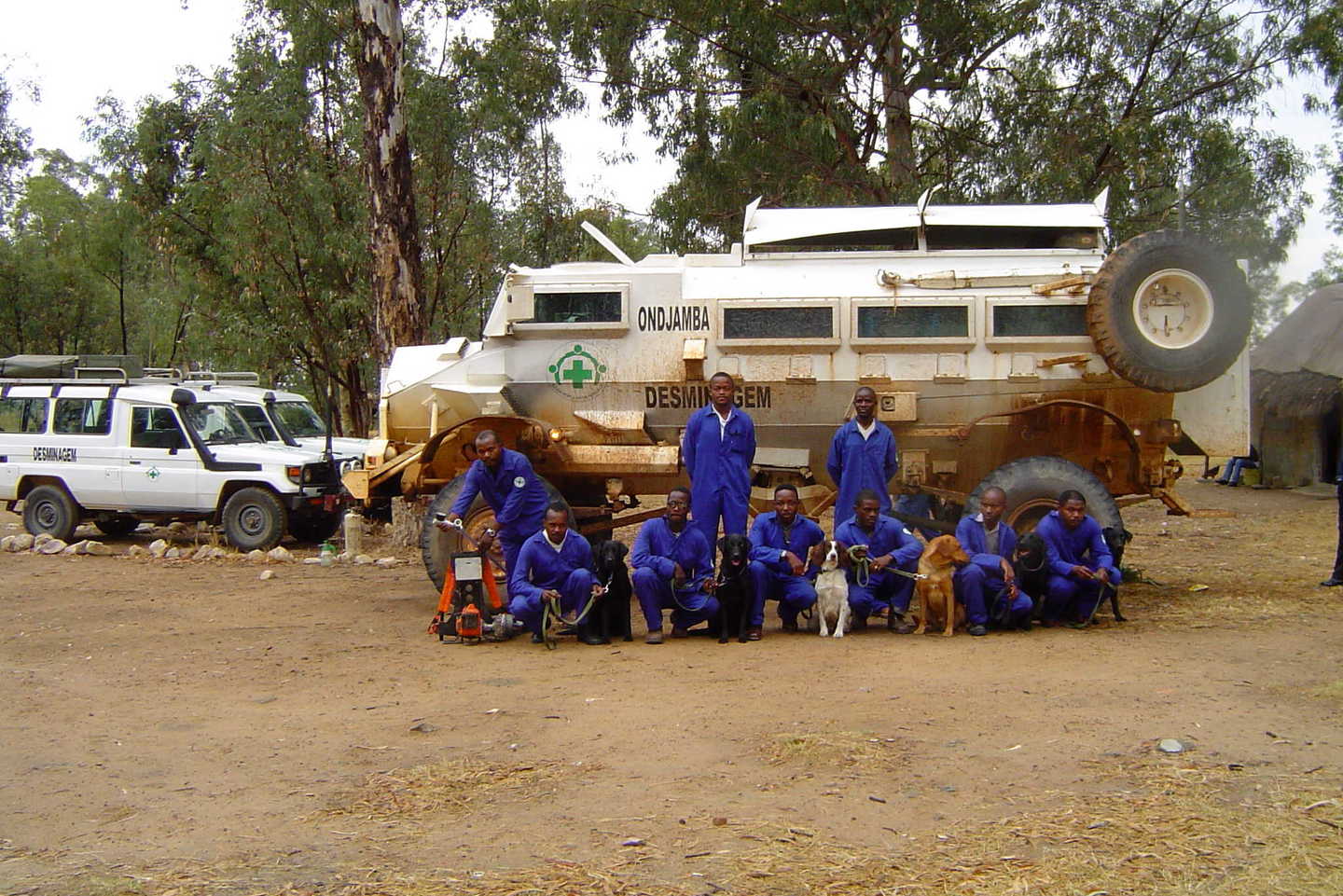
REST - Remote Explosive Scent Tracing
FDTA have completed projects in collaboration with UN for more than 10 yares developing and testing the REST- technology
NPA-REST team – Angola

FDTA have completed projects in collaboration with UN for more than 10 yares developing and testing the REST- technology
The remote scent tracing technology is also used to detect explosives, and is then called REST: Remote Explosive Scent Tracing, most often when used in relation to mine clearance.
In 2000 the Geneva International Centre for Humanitarian Demining (GICHD), initiated an extensive research program on Mine Detection Dogs. This included further development of REST. Dogs and rats were taught to detect and respond to extremely low concentrations of scent substances from explosives and mines in laboratory conditions. The aim was to be taking samples on roads and areas suspected of containing landmines and having animals analyze the samples to detect the presence of mines or explosives.
FDTA has a long-standing collaboration with GICHD, and was asked to participate in the REST study. FDTA managed the REST research project in 2009-2010, and identified key problems in developing the technology towards an efficient operational use. The results of this study can be found in the official publication of this project (see below):